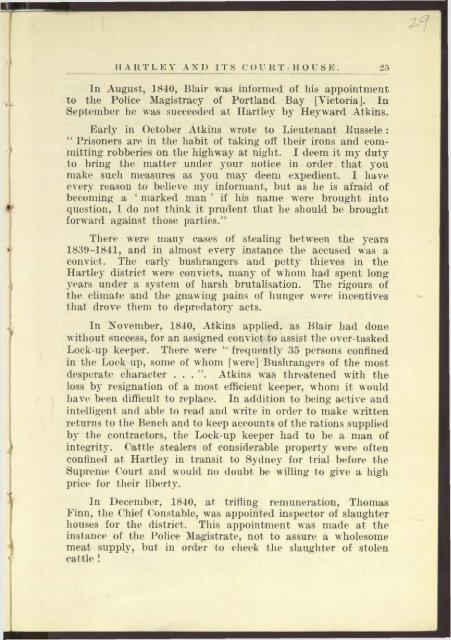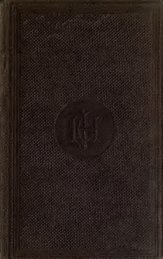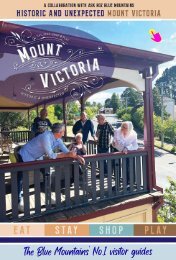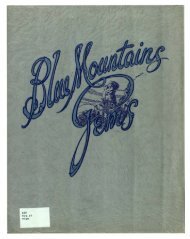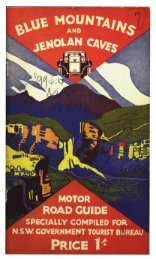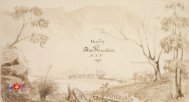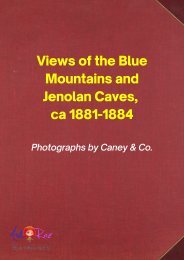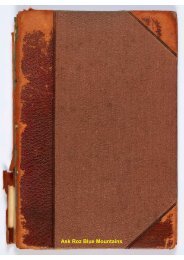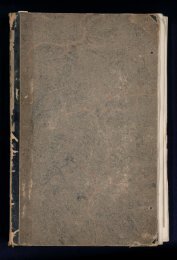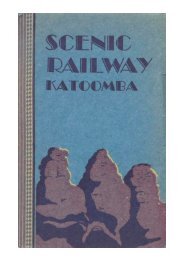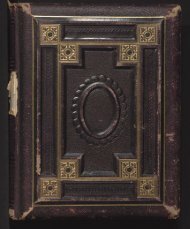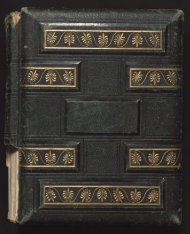Hartley Court House - 1837 to 1937
Hartley Court House - 1837 to 1937
Hartley Court House - 1837 to 1937
Create successful ePaper yourself
Turn your PDF publications into a flip-book with our unique Google optimized e-Paper software.
24 HARTLEY AND ITS COURT-HOUSE.<br />
part of the wall and cedar skirting, and nearly burned through<br />
one side of the ammunition chest which contained in addition<br />
<strong>to</strong> the police ammunition a quantity of powder recently taken<br />
from bushrangers. The Colonial Architect gave instructions<br />
for the necessary repairs <strong>to</strong> be made and pointed out that large<br />
wood fires for three winters without using dogs had probably<br />
nearly burnt through the backs of the fire-places which, if such<br />
were the case, would need renewing. He also suggested that a<br />
safer place for s<strong>to</strong>ring ammunition would be in the <strong>Court</strong> Room<br />
near the entrance.<br />
The equipment of the constabulary at <strong>Hartley</strong> at the end<br />
of December, 1839, was ten cut-down muskets— five beingunserviceable,<br />
ten bayonets, nine bayonet scabbards, seven<br />
pouches, seven belts, 120 musket cartridges and 137 flints.<br />
The number of ordinary constables had diminished from five in<br />
September <strong>to</strong> one.<br />
Ce l l s a t t h e C o u r t-H o u s e .<br />
Tenders for the erection of cells at <strong>Hartley</strong> were called in<br />
1839. Contrary <strong>to</strong> popular tradition the cells there were not<br />
reserved for prisoners who had received the death sentence at<br />
<strong>Hartley</strong>. Those accused of major offences were merely detained<br />
at <strong>Hartley</strong> <strong>Court</strong>-<strong>House</strong> until transferred, according <strong>to</strong> warrant,<br />
for trial at a higher court. It is recorded that during the year<br />
ending September 30, 1841, £322 5s. wras spent on building six<br />
cells, and the Mounted Police Barracks were commenced.<br />
A correspondent in the Sydney Herald of June 19, 1840,<br />
stated that there was sufficient wheat and hay for two years<br />
in the district even if no more were grown for that period.<br />
The price of wheat was 1 6 /- per bushel and hay £12 per <strong>to</strong>n.<br />
The district was <strong>to</strong>o cold for maize. The farmers were all<br />
beginning ploughing and extending the cultivation of their<br />
farms. The quietness of the district was attributed <strong>to</strong> the very<br />
active Police Magistrate [Blair]. The Mounted Police stationed<br />
there were a very useful body. The Mounted Police, unlike<br />
the constables, were not under the control of the Police<br />
Magistrate, but formed a branch of the military, all matters<br />
regarding those stationed in this district being referred <strong>to</strong> the<br />
local military officer.


